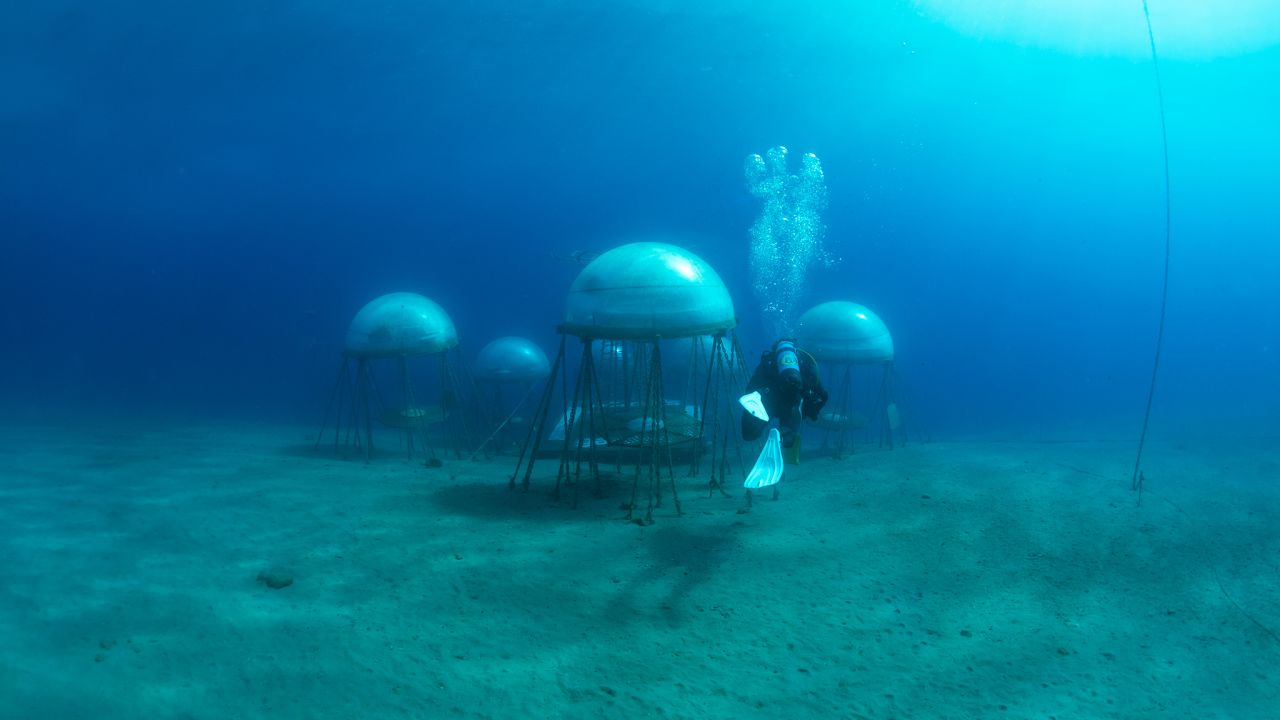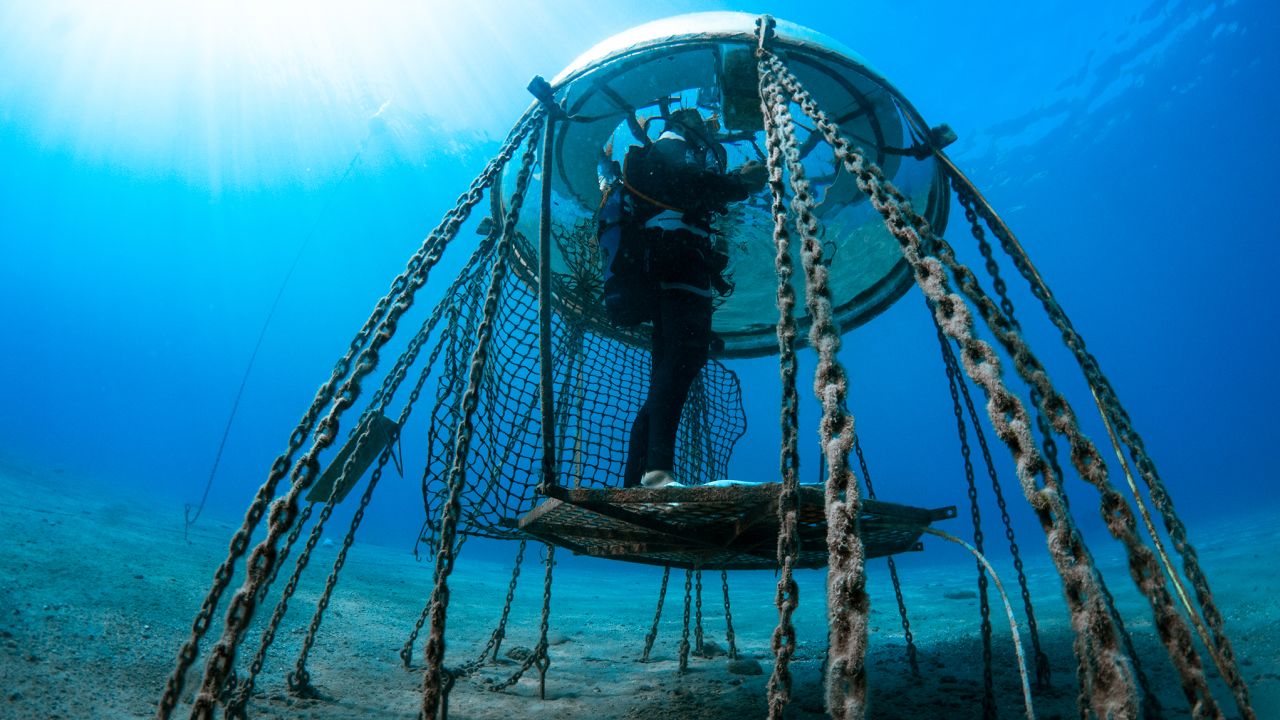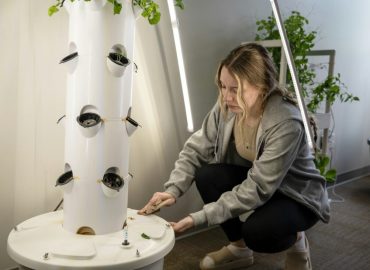Underwater Farming
Nemo’s Garden: The future of farming could be under the sea
Underwater Farming | Michelle Cohan |
When you think of the next frontier for growing food, you might think of distant plans to cultivate crops on Mars.
But one Italian family in the diving equipment business believes the next untapped arable expanse is right here on Earth: the sea.
Nemo’s Garden is the world’s first underwater cultivation system of terrestrial plants. Located off the coast of Noli, Italy, southwest of Genoa, the farm consists of an array of suspended, transparent, dome-shaped greenhouses called biospheres, anchored to the bottom of the sea.
“The mission of this technology is to change agriculture, to give it an added possibility for growing produce on the huge amount of coastlines of the Earth, while being sustainable and not affecting the environment,” co-founder Luca Gamberini tells CNN.
His father and founder of underwater gear company Ocean Reef Group, Sergio Gamberini, came up with the idea by combining his two passions – scuba diving and gardening. In 2012, the project began with planting basil in a balloon underwater. Ten years on, Nemo’s Garden is growing strong.
Underwater benefits
With the global population expected to reach roughly 10 billion by 2050, the UN estimates food production will need to increase up to 60% to meet this demand.
“We have a finite amount of resources, and our (current) way of harvesting those resources is unsustainable,” Gamberini says, “and we believe that underwater gives us some advantages (over) traditional agriculture.”
Floating six to 10 meters underwater, plants in Nemo’s Garden are separated from any outside pathogens and pests, while still having access to freshwater that occurs as a result of desalinated condensation within the biospheres, Gamberini says. Also, he notes, the relatively steady temperature of the sea water is an ideal environment for plant life.
Nemo’s Garden uses hydroponics – a technique that uses water-based nutrients instead of soil, the same method used in most indoor vertical farms. Sunlight does reach the plants, but supplemental growing lights are used when needed.

Nemo’s Garden, pictured, is one novel idea to help feed a growing population. Courtesy OceanReefGroup
Everything is monitored on land through cameras and sensors, and settings can be adjusted remotely from anywhere in the world, Gamberini says. When it’s time to harvest, a diver will clip the vegetation, place it in bags and float it to the surface.
Since the biospheres are only about two meters in diameter, they can’t grow bigger crops like corn or wheat. But they can fit anywhere from 70 to 100 smaller plants, Gamberini says. “We tested hundreds of different plants ranging from strawberries to tomatoes, beans, and of course, herbs,” he adds.
Studies ranging in nature from pharmaceutical to culinary have been conducted on Nemo’s Garden. A 2020 study from Università di Pisa concluded that basil from the garden had a higher essential oil concentration and contained more antioxidants.
As for its physical footprint, Gamberini says that the aquatic farm attracts sea life, instead of disturbing it. “In our studies Nemo’s Garden has 58% more fish than the surrounding environment, so it has a repopulation effect,” he adds.
Uncharted territory
Gamberini says the pilot project has not been without challenges – in particular, unavoidable weather events. In 2019, a powerful storm broke some of the biospheres.
“We did not scout a location that was perfect in terms of sun and seasons, and the exposure to strong storms,” he says of the Noli site, which was chosen due to its proximity to his family vacation home.

Equipment inside Nemo’s Garden is powered by renewable energy like solar panels and wind turbines.Courtesy OceanReefGroup
Beyond natural disasters, creating something from scratch – in a harsh environment no less – has not been easy, he tells CNN, but it has been exciting.
Other companies around the world are also exploring the benefits of the sea for farming. GreenWave, a nonprofit in North America, is growing seaweed and shellfish on an underwater scaffold. Bangalore-based company Sea6 Energy has created a mechanized tractor that can plant and harvest seaweed on the ocean floor.
The team at Nemo’s Garden has plans for even bigger biospheres in the future, as well as other locations. To test feasibility in different environments, they plan to set up a small-scale version in a cold-water quarry in the US state of Ohio this year.
“I think that most technology can be adapted to almost every environment,” Gamberini says, but he believes the future of Nemo’s Garden will be mostly along the coastlines where communities could benefit from the added space it offers.
“Underwater farming is not (going to) answer the issue of ‘how are we are going to feed the whole world,’” Gamberini says, “but I hope that it becomes a standard in the regions that need it.”
Original Article: https://www.cnn.com/travel/article/nemos-garden-underwater-farm-italy-spc-intl/index.html
The post Underwater Farming appeared first on GROZINE.


